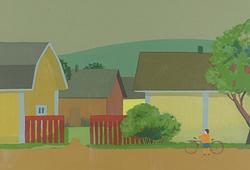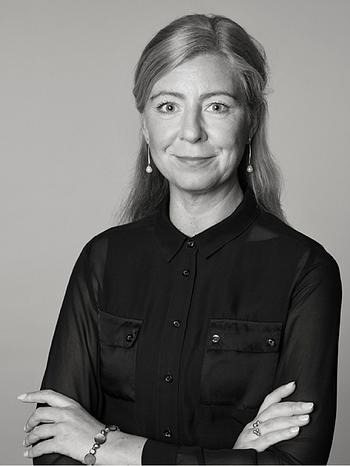Francois Pompon
"Hibou"
Signed Pompon. Concieved 1927-1930. ANDRO Foundry cast this bronze in this size in a sand cast from 1930. Foundry mark ANDRO. Fondeur Paris. Bronze, dark brown patina. Heigth 28 cm (11 in.).
Note: If your online bid exceeds SEK 3 million, you will need a bank reference. Please contact our customer service to be cleared for this level of online bidding.
Alkuperä - Provenienssi
Svensk-Franska Konstgalleriet, Stockholm, Sweden.
Marabou Collection, Sundbyberg/Upplands-Väsby, Sweden (acquired from the above in 1938).
Kraft Foods Sverige AB, Upplands-Väsby, Sweden.
Näyttelyt
Compare another bonze by Pompon in the catalogue of Svensk-Franska Konstgalleriet, Stockholm, Sweden, "Francois Pompon och Auguste Renoir", 1938, illustrated in the catalogue.
Kirjallisuus
Nils Lindhagen och Alf Rolfsen, "Konst hos Freia och Marabou", 1955, mentioned and illustrated full page.
Ragnar von Holten, "Art at Marabou", 1990, mentioned and illustrated p. 38.
Catherine Chevillot, "Francois Pompon 1855-1933", 1994, compare version in marble, illustrated p. 188, no 36 (under the title "Grand Duc").
Muut tiedot
François Pompon made his breakthrough as an artist late in life. At the age of 67, in 1922, he created a monumental sculpture in white marble, “L’Ours Blanc”, of a stylised white bear in motion. It was first exhibited at the Salon d’Automne, where it won great admiration, and is now in the Musée d'Orsay in Paris. His distinctive, pure and minimalist style was an overnight success, and a productive period ensued. His aesthetic ideals, with stylised, simplified forms, felt modern at the time and are just as timeless today, but even his previous works became sought after by collectors.
The Salon d’Automne was launched in the early 1900s by Matisse, Roualt and other artists, as a reaction against the Paris Salon, which, to them, represented an antiquated attitude to art. Here, new artists soon established themselves, including Renoir and Rodin, and they were eventually joined by Cezánne, Gauguin, Picasso and others. After the First World War, the Salon d’Automne also began exhibiting crafts, and continues to do so to this day.
François Pompon began his artistic career in his father’s headstone workshop at the age of 15. He worked there for many years, learning the basic stonemasonry skills, before he began to express his dreams of making his own art and sculptures. Meanwhile, he attended evening classes at École des Beaux-Arts in Dijon, where he was born. At first, he studied architecture and print-making, but eventually he moved on to study sculpture, under François Dameron. This was how he began to develop his three-dimensional oeuvre, with the animal kingdom as his main source of inspiration.
At the age of 21, Pompon moved to Paris, where he enrolled at the École Nationale des Arts Decoratifs. At this time, he was deeply fascinated by art from the Far East, and his style was influenced by Japonism, which was in fashion. He also admired the Egyptian art at the Louvre. Occasionally, he produced architectural ornaments, for instance, for the construction of Hotel de Ville in Paris, but in private he preferred working on human figures and made countless busts. In 1879, he exhibited one of his own works for the first time. This was an interpretation of the author Victor Hugo’s Cosette (from Les Misérables).
In Paris, he became sought after as an assistant in sculpture studios, and in 1890 he began working in Auguste Rodin’s studio where he remained for nearly 15 years. The master appreciated him highly and taught him about the inherent power of the materials, how to select the perfect marble block for monumental works, and how to cast sculptures in bronze and choose the right patina. Eventually, however, he grew tired of sculpting human figures and of Expressionism. He wanted to create representations of animals, in his own simplified style. His studies of nature and animals at rest and in motion had begun when he was young, and he pursued this interest throughout life, in the countryside in the summer, and in the city on frequent visits to the botanical garden Jardin des Plantes in Paris. His fascination for the more exotic fauna encouraged him to create a wider range of animals.
His timeless sculptures in a veritably archaic style seem to have an inherent energy that is as enthralling today as when they were new, and imbues their soft shapes with monumentality and animation.
Beginning with a clay sketch, he simplified and developed his volumes to uncover the essential quality: “I keep a large number of details that will later go,” Pompon said. “I first do the animal with almost all its trappings. Then I gradually eliminate them...”













































